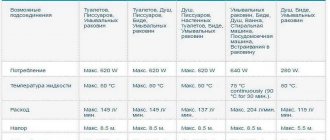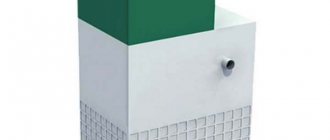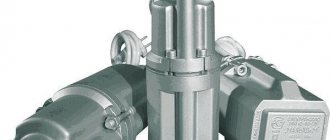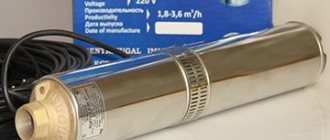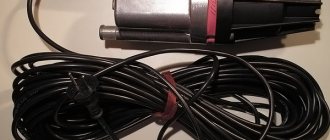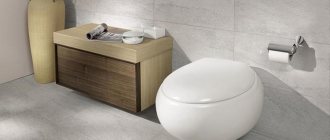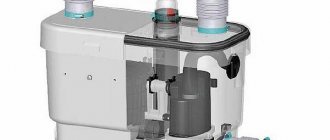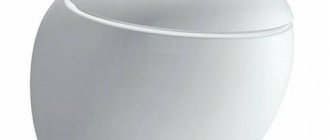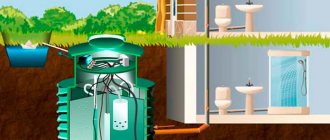Are you looking for an unpretentious and easy-to-use electric pump for irrigation and water supply of a country house? Agree, it would be good to buy an inexpensive unit that can perform its functions without interruption for many years.
Perhaps you are interested in the Agidel water pump, about which the neighbors in the area spoke flatteringly? But do you doubt its performance and the feasibility of such an acquisition? We will help you get acquainted with this pump in detail - the article describes its characteristics, pros and cons, as well as features of installation and connection to the system.
Operating rules are also given, the implementation of which allows you to repeatedly increase the service life declared by the manufacturer; photographic materials, current diagrams and thematic videos have been selected that reveal the nuances of preparation for launch and the subtleties of regular use.
As evidenced by reviews from consumers and specialists, Agidel is truly reliable and durable equipment. Moreover, these electric pumps have long been known to summer residents and gardeners throughout the CIS.
- Rule #1 - preparing the pump for operation
Trademark "Agidel": brand history, product review
The Ufa Aggregate Production Association (UAPO) has been producing Agidel brand pumps since the 70s of the last century. Moreover, many owners of similar products still use pumps from the first batch.
The secret of such survivability is explained by the initially high quality of components and the very successful design of Agidel pumps.
Moreover, the production of components, as well as the assembly of the unit, is carried out on the basis of the production facilities of UAPO. That is, Agidel pumps are manufactured in the same workshops where complex units for the aviation industry or high-tech equipment for the oil and gas industry are produced.
In addition, under the Agidel brand, UAPO also produces contactless ignition systems, spark plugs (incandescent and spark), and corundum ceramics. And UAPO itself is a fairly respected brand in narrow circles, producing generators, plasma ignition systems, protected electric motors and components for gas pumping stations.
Models “M” and “10” are improved versions of the first pump of the BC series from Ufa manufacturers, which was produced for more than forty years.
In a word, the Agidel brand is a very respected trademark, founded by a well-known domestic manufacturer, whose products are famous in quite specific circles (oil and gas production, aircraft manufacturing, defense industry, and so on).
Model range and manufacturers
As evidenced by reviews from consumers and specialists, “Agidel” is truly reliable and durable equipment. Moreover, these electric pumps have long been known to summer residents and gardeners throughout the CIS.
Agidel electric pumps are a type of surface centrifugal pumps and are produced by PromGroup LLC, the successor of the Ufa Aggregate Production Association, which has been producing electric pumps under the Agidel brand for more than 50 years.
Over the years, the design of the pump has not changed fundamentally, except that high-strength polymers instead of alloys began to be used for the manufacture of some parts.
It is worth noting that the Ufa company produces all the components for Agidel electric pumps independently, and the quality of the assembly is highly appreciated by specialists.
The cost of these electric pumps in comparison with imported analogues is 2-5 times lower, and in terms of performance, reliability and durability they are almost inferior to global brands.
The Agidel series of surface centrifugal pumps is designed for collecting and transporting water from open reservoirs, shallow wells, wells
The model range of Agidel pumps cannot be called diverse; it contains only two models:
- “Agidel-M” is a small-sized electric pump used to supply water from a shallow depth of up to 8 m and over short distances. Available in vertical, horizontal and universal formats.
- “Agidel-10” is a medium-power, self-priming pump capable of lifting water from a well or borehole up to 7 m deep. Available only in a horizontal version.
Both options are equipped with a centrifugal-type pumping mechanism, which is driven by a single-phase motor powered by a 220 V power supply.
If we compare both pumps, the “ten” looks more preferable: this unit has 33% more pressure and 14% more productivity, however, energy consumption is 2 times higher than that of the “M” modification.
Models “M” and “10” are improved versions of the first pump of the BC series from Ufa manufacturers, which was produced for more than forty years
You may find useful information about the top ten centrifugal pumps on the market.
Purpose and scope of application
Surface pumps “Agidel” are popular among summer residents and owners of country houses. The units are installed on a flat surface in special containers, utility rooms or under a canopy to protect them from precipitation and sunlight.
Despite its suitability for working with open reservoirs, it is desirable that the pumped water undergo pre-filtration. For example, when using a unit for pumping water from a well, it is recommended to install a bottom filter.
The scope of application of the pumps is quite limited, but it fully satisfies the needs of the owners:
- autonomous water supply system at home;
- irrigation of agricultural crops;
- water supply to water-consuming household appliances;
- filling/pumping out pools and tanks;
- water supply from a well, well, open reservoir.
Agidel pumps are not recommended for pumping water from flooded basements, because... in most cases, the water will contain large suspended particles, which will quickly damage the unit.
Your pump has stopped pumping water and you don’t know what to do? You may find information about repairing an Agidel brand pump useful.
Electric pump “Agidel-10” If you plan to operate the pump in winter, then you need to take care of the insulation system so that the temperature of the environment surrounding the pump is above zero.
Troubleshooting yourself
Some problems can be fixed without the help of specialists.
Weak water supply
Poor flow (weak flow or jerky flow) most often occurs when using the wrong water intake hose. When fluid is sucked from the well, rarefied air is formed inside the rubber hoses, which causes compression of the walls. This interferes with the normal supply of water. A hose reinforced with a plastic spiral is recommended for the unit.
A hose reinforced with a plastic spiral is used for water intake.
Design and principle of operation
Agidel electric pumps have a simple monoblock design, characteristic of all centrifugal surface pumps.
Since the time of the first version of “Agidel-BC”, the design of the unit has remained the same, only special protection against overheating has appeared, allowing the pump to be operated without interruptions for a long time.
An electric pump marked M consists of two main parts: an electric motor and a centrifugal pump. In the “Ten”, the set of an engine and a centrifugal pump is also supplemented with a jet pump.
It is responsible for ensuring “self-priming” of water supplied to the system by its centrifugal counterpart.
The electric motor that drives the pump includes a stator with a built-in thermal fuse that protects the winding of the mechanism from overheating.
The electric motor also includes a rotor, bearing shield, and flange. Cooling during operation is carried out by a vane fan, which is closed with a cap.
The operating principle of the pump is based on the action of centrifugal forces, thanks to which the unit provides water supply. The source of centrifugal force is the impeller located on the rotor shaft.
The flange contains cuffs that protect the electric motor from water entering it.
Diagram of the design of the Agidel M centrifugal pump Electric motors of all modifications of Agidel pumps must be carefully protected from the slightest ingress of water - the main reason for their failure.
Water enters the pump through the inlet valve, which also serves as a filter that prevents foreign objects (large particles, debris, rock debris, etc.) from entering the pump.
In the Agidel-M model, this valve plays the role of a shut-off valve when priming the pump before starting.
The housing connector and flange are sealed with a rubber gasket. The “M” model is additionally equipped with an air bleed screw. To install the pump in a vertical position, the housing has mounting holes. Holes in the rack are used for horizontal placement.
Grounding diagram for the electric pump Agidel 10 The pump “Agidel-10” is equipped with a four-core power cord for connecting to the electrical network, which is reinforced with a plug with a built-in grounding contact.
Pump Features
In 1966, residents of the Soviet Union saw and were able to try the newest invention of that time from the Ufa Aggregate Plant - a pump for household needs called “Agidel”. Since then, it has been an indispensable assistant during watering seasons among those who have their own plots of land and greenhouses, i.e. among garden lovers. BC-0.4-20 was a long-liver among pumps, as it appeared around 1965 and was produced for 30 years.
Its characteristic feature is the presence of a technological hole between the impeller and the seal - it stopped the air that could remain inside when filling the pump with liquid before starting (air bubble). It was also possible to unscrew the plug from it and screw in a fitting, valve, hoses, even a funnel. By the way, it was through the funnel that it was possible to fill the parts of the pump and suction pipe with water.
Along with installing additional tubes in order to fill the pump, a hose was connected. At the top there was an aluminum cover that covered the engine and performed a waterproof function. A few years later, the color of the device was changed, and the cover was no longer made of aluminum, but of plastic, but the components and engine remained the same. This was the case until 2013, when they decided to release an “anti-crisis solution.” Let's look at the current and most popular models that are bought and praised even today.
Self-priming pumps without pre-filling liquid
Both models have a centrifugal-type pumping mechanism, which is driven by a single-phase electric motor. Centrifugal pumps operate by communicating the pumped conditions of rotational motion. As a result, centrifugal force arises, which creates pressure. Such pumps have a simple design, durability and high efficiency.
The self-priming function means that the device is capable of creating a vacuum and drawing in liquid from a certain depth. Agidel pumps do not need to be immersed in water. That is why the external parts of the device are made of cheaper materials. Models have overheating protection.
The pump is equipped with a 1.5 m long cable. In this case, you can use an extension cord, or immediately replace the cable with a longer one.
Maintenance of the device includes periodic disassembly, cleaning of the impeller and lubrication of the blades. Sometimes it is necessary to replace oil seals marked 8G6477005. As a rule, these operations are carried out during winter assembly of the device. To ensure the pump lasts a long time, it is recommended to install a reliable check valve on the supply line. All joints should be well sealed.
Source: sovet-ingenera.com/vodosnab/nasosy/vodyanoj-nasos-agidel.html#i-4
Advantages and disadvantages of pumps
The manufacturer has determined the service life of the pump to be 5 years. It is after this period that the first replacement of the seals will be required if the device is used correctly. The apparatus cannot be used to pump dirty water; the impeller may suffer abrasive wear and the apparatus may lose pressure.
The advantages of Agidel pumps include:
- simple maintenance and repair;
- low price of products;
- low electrical energy consumption;
- long service life and adaptability to unstable network voltage.
The inconvenience is due to the technical capabilities of the pump. He cannot take water from the depths. The need to install the device in close proximity to the sampling point.
Please note that the product in a plastic case is counterfeit.
Main characteristics
It should be noted that the company’s product range includes only two pumps of this brand, differing in design and principle of operation.
"Agidel-M" is a compact device operating on the centrifugal principle. Placed on the surface in a vertical position. The model without an ejector is designed for lifting water from wells up to seven meters deep. And if you use an ejector with this unit, the efficiency of the pump will double, and the owners will be able to receive water from a depth of up to 15 meters.
The movement of water is ensured when the electric motor is turned on by rotating the shaft with blades located on the axial bushing. The liquid inside the pump chamber is forced into the pipeline under the influence of centrifugal force. And in the center of the impeller, a zone of low pressure appears, which ensures a continuous flow of water from the well through the intake hose.
Main characteristics:
- a pressure of 20 meters is created;
- productivity – 2.9 cubic meters per hour;
- power – 370 W.
Advantages:
- low price;
- the ability to use at a sufficient depth when using an ejector;
- ease of maintenance and operation;
- high reliability;
- low energy consumption.
Flaws:
- The unit is afraid of dry running (it is necessary to fill in water at the beginning of operation).
Average price from 4,500 rubles.
"Agidel-10" is a more powerful and larger model of the self-priming vortex type. Placed on the surface in a horizontal position. The main advantage of the unit is the possibility of a “dry start”. That is, when starting up for the first time, there is no need to fill the pump with water.
The unit body consists of two chambers, like any self-priming pump. Turning on the pump starts the rotation of the impeller (impeller), which creates a vacuum and causes air to be sucked in.
The water in the housing is mixed with air. The movement of water and air creates a vacuum zone, which ensures the suction of liquid through the intake hose. Remaining air is removed through a special technical opening. The unit then functions as a standard centrifugal pump, the operation of which was described above.
Main characteristics:
- pressure up to 30 meters;
- productivity – 3.3 cubic meters per hour;
- power – 700 Watt.
Advantages:
- budget cost;
- long service life;
- the unit is not afraid of dry running;
- ease of maintenance;
- reliability.
Flaws:
- cannot be used at a depth of more than seven meters;
- quite high energy consumption.
Price from 6,000 to 7,500 rubles.
If we compare the technical data, it becomes clear that the second pump has better performance and is able to create more pressure. The main advantage of the first type model is low power consumption (370 watts) and light weight. It allows the use of an ejector, which is important for owners of wells and wells fifteen meters deep.
If power is not the main parameter of choice for owners when purchasing a pump, you can safely purchase a more economical and compact model. The units are no different in build quality and service life.
Features of Agidel surface installations
The pumps are designed to pump clean water.
They are installed for extraction from wells and supply from open clean reservoirs for irrigation. The operating principle of the devices is centrifugal. Agidel pumps pump liquid through rotating impellers in a snail-shaped housing. At the moment of rotation, a vacuum is created at the suction in the housing, the water is picked up by the blades and, due to centrifugal force, is pushed into the discharge pipeline. Due to the vacuum, water enters the chamber, which is why the device is called self-priming. The pump consists of structural units:
- a casing secured with bolts from the outside;
- engine housing;
- a cochlea, which also serves as a body;
- impellers, on the same shaft with the motor armature;
- electric motor, with gasket and seals, for sealing from the aqueous environment.
The simple design of the device does not require additional protection or sealing of connections and therefore is inexpensive; the tool is available to every user. Agidel pumps are protected from overheating, but they are used when pumping water below 400 C. The layout of the products is different. Each pump is installed on a solid foundation with level reference. It should be taken into account that every 4 meters of a horizontal pipe is equal to the loss of the ability to rise from a depth of 1 m. The pump is installed in close proximity to the well.
Installation
When installing pumps of this brand, you should adhere to three main parameters:
- positive operating temperature;
- as close as possible to the water source;
- flat surface for installation.
Obviously, the ideal solution would be to install an insulated coffer chamber with a flat bottom. In such conditions, the equipment will be able to work even in the winter cold. A close location to a well or well is required due to the sensitivity of the equipment to depth - this is an indicator from 7 to 15 meters, depending on the model and the presence of an ejector.
Installation directly on the well head or well cover is allowed (this is a good solution for summer use). The caisson is installed five or ten meters from the house below the freezing point of the soil.
A good solution would be to install it on a special raft, which is then lowered into the well. But in this case there will be a problem with connecting the electrical cable. It needs to be extended and waterproofed. The standard cable length is 1.5 meters.
Experts recommend using “Agidel-10” for installation in a caisson or mounting on a raft for year-round use. And for seasonal use, you should use “Agidel-M” - a unit that requires adding water before starting and is extremely sensitive to low air temperatures. It can be installed on a flat surface near the well or attached to a special bracket at the well head. For the winter, the pump is dismantled, dried and stored in a warm room.
Rules for using the Agidel M model
The design of the pump is quite unpretentious in operation. Operation is easy to do with your own hands. But the manufacturer provides instructions for the correct use of the device. These include mandatory compliance with vertical placement, a warm place and an even surface. Otherwise, the equipment may be damaged beyond repair.
Features of using the “Agidel M” design:
- For year-round operation, the caisson should be installed on the head of a water column or well. The device should be as close to the water as possible. The pump must be insulated and sealed from the weather.
- The device can be placed on a platform on the surface of the water. But the conditions for absolute reliability of the raft must be observed. You will also need to insulate the electrical wiring. This installation involves extending the wire.
- Before installation, the pump tank must be filled.
Preliminary work before start-up includes manually pouring water into the tank. After liquid appears from the hose, you need to start the device. The impeller will begin to rotate and create a force to supply water. The model cannot operate with a dry container.
The “Agydel” model belongs to the summer varieties of pumps. They are suitable for use in baths, showers and car washing.
Sooner or later the device may fail. The pump will stop pumping water. The reason for this may be a loss of horizon, faulty seals, or problems with hoses. In this case, repair or replacement of some parts is necessary. It's better to leave this to the professionals.
How to use?
Basic operating recommendations boil down to just two requirements:
- Do not overload the self-priming vortex pump when using it at great depths;
- and for the model it is very important not to allow dry running - it cannot be used without first pouring water into the pump chamber.
When the model is first started, which does not require preliminary filling of liquid into the pump chamber, water appears in the water supply within five minutes. This is how long it takes to fill all the pipes and raise the pressure in the system.
The main technical requirements are:
- to mandatory provision of grounding;
- to thorough waterproofing if the cable has been extended;
- to arranging a raft from materials that do not interact with water (relevant when lowering the unit into a well);
- to take into account the depth of the source and the maximum pressure created by the pump;
- to maintain operating temperature conditions (above zero degrees Celsius).
Connection diagrams for single-phase asynchronous motors
With starting winding
To connect a motor with a starting winding, you will need a button in which one of the contacts opens after switching on. These opening contacts will need to be connected to the starting winding. In stores there is such a button - this is PNDS. Its middle contact closes for the holding time, and the two outer ones remain in a closed state.
Appearance of the PNVS button and the state of the contacts after the “start” button is released"
First, using measurements, we determine which winding is working and which is starting. Typically the output from the motor has three or four wires.
Consider the option with three wires. In this case, the two windings are already combined, that is, one of the wires is common. We take a tester and measure the resistance between all three pairs. The working one has the lowest resistance, the average value is the starting winding, and the highest is the common output (the resistance of two windings connected in series is measured).
If there are four pins, they ring in pairs. Find two pairs. The one with less resistance is the working one, the one with more resistance is the starting one. After this, we connect one wire from the starting and working windings, and bring out the common wire. A total of three wires remain (as in the first option):
- one from the working winding is working;
- from the starting winding;
- general.
Repair
"Agidel" are reliable pumps with a long service life. Malfunctions in their operation can occur:
- if the tightness of the water intake hose is broken, the problem is eliminated by replacing it;
- if the electrical cable fails, it is also recommended to replace it with a new one, since numerous twists increase the likelihood of a short circuit;
- when the seals wear out - this breakdown causes a leak in the drainage hole and requires immediate repair.
Obviously, the most serious problem with pumps is seal wear. Damage can be easily repaired with your own hands. For repairs you will need a screwdriver and a set of spanners, as well as a new oil seal.
Work order:
- The casing is removed (it is attached to three external bolts).
- The engine housing is dismantled (four more bolts are unscrewed).
- The cochlea, the part of the body responsible for absorbing liquid, is detached.
- The impeller is removed, secured with one central bolt.
- The anchor is removed from the impeller using a hammer.
- After the armature comes out, you can find oil seals inside, which are pulled out along with the insert located in the middle.
- The seals are replaced with new ones (they are separated by an insert!).
- The unit is assembled in the reverse order.
To ensure a long service life, it is recommended to follow all operating rules specified by the manufacturer in the product technical data sheet.
Mandatory maintenance includes periodic disassembly of the pump, cleaning the impeller or impeller parts from adhering dirt and lubricating rubbing parts (for example, shaft bushings).
KIV provides automatic shutdown of the pump in the event of hydraulic system malfunctions: a broken hose or pipeline, a decrease in the water level in the water source.
To ensure smooth start and stop, the Agidel pump can be equipped with an individual water supply controller (IW), which reduces the risk of electric motor overheating and prevents water hammer in the system.
Asynchronous or collector: how to distinguish
In general, you can distinguish the type of engine by a plate - a nameplate - on which its data and type are written. But this is only if it has not been repaired. After all, anything can be under the casing. So if you are not sure, it is better to determine the type yourself.
This is what a new single-phase capacitor motor looks like
How do collector motors work?
You can distinguish between asynchronous and commutator motors by their structure. The collectors must have brushes. They are located near the collector. Another mandatory attribute of this type of engine is the presence of a copper drum, divided into sections.
Such motors are produced only as single-phase ones; they are often installed in household appliances, as they allow one to obtain a large number of revolutions at the start and after acceleration. They are also convenient because they easily allow you to change the direction of rotation - you just need to change the polarity. It is also easy to organize a change in the rotation speed by changing the amplitude of the supply voltage or its cutoff angle. That is why such engines are used in most household and construction equipment.
How to ensure proper operation?
To avoid engine breakdowns and damage, you must adhere to the following rules:
- The pump is installed on a perfectly flat surface! In a caisson, this is achieved by pouring a concrete floor.
- It is vitally necessary to install a check valve in the water supply system. Without it, the pump operates with additional load and fails faster.
- The pipes and hose must be of the appropriate diameter (it is indicated in the technical data sheet of the unit).
- It is necessary to ensure the tightness of all connections (it is also periodically checked by the owners during operation).
It is also important to install it as close as possible to the water source, which reduces pressure loss and load on the equipment.
Source: greenologia.ru/eko-zhizn/sistemy/vodosnabzhenije/nasosy/
Installation nuances and operating features
Agidel pumps should be installed on a flat, hard surface. Usually a pedestal is constructed from reinforced concrete or a shield from thick boards. The Agidel-M model is installed vertically, and the Agidel-10 model is installed horizontally.
If the pump is installed at some distance from the well, it should be taken into account that a 4-meter horizontal section of the suction pipeline in terms of hydraulic resistance is equivalent to 1 m of height difference.
This means that the distance between the unit and the well, in which the water drops to a depth of 5 m, should be no more
L = (7 - 5)x4 = 8 m,
Where 7 is the maximum suction depth for Agidel pumps.
Before starting, the working chamber and suction pipe of the pump must be filled with water.
Many sources published on the Internet report that the Agidel-10 model does not need this, but the manufacturer’s website says nothing about this. Owners of these units, discussing this issue on forums, consider it necessary to fill both models.
To prevent water from leaking out of the suction line during short pump downtimes, a check valve should be installed at its end. This item comes with Agidel pumps, but users report that they do not hold water well. Newly-made Agidel owners are recommended to replace the standard valve with a more reliable one, equipped with a brass spool. Then the pump will have to be primed only once a season (with relatively short downtime).
A reinforced hose must be used as a suction line - a regular rubber or silicone one will be compressed by atmospheric pressure.
Actual, like other centrifugal units, depends on the hydraulic resistance of the pressure pipeline and the height to which water is supplied (relative to the axis of the pump).
It should be understood that the maximum pressure and performance data indicated in the characteristics are mutually exclusive.
If the unit has to develop maximum pressure, the productivity will be much less than indicated, and vice versa - maximum productivity will occur only with minimum pressure.
To understand how much water a pump will pump at a specific pressure value, you need to analyze the so-called pressure characteristic, which looks like a graph or table.
At the moment, the choice of pumps is simply huge - there are vortex, vibration, and centrifugal options. How to decide which one is right for you? Read on. Well pump: which one to choose? Selection by type of installation and method of pumping liquid.
Why you need a well head and how to make it yourself, read this article.
Maintenance of Agidel pumps: do-it-yourself service
Caring for Agidel brand pumps is not limited to pouring liquid into the working chamber before starting the unit. Sometimes the pump breaks down and does not pump water from the well. Moreover, the cause of the breakdown may be a leaky hose - it can be changed in a matter of minutes, or a deformed oil seal - here you will have to tinker longer.
After all, to replace the oil seal you need to do the following:
Remove the unit casing by removing the three screws located at the top of the housing.
Remove the motor housing by unscrewing the four screws holding this structural element.
Remove the volute by unscrewing the four bolts and removing the rubber gasket sealing this assembly.
Next, you need to loosen the impeller nut to gain access to the pump motor armature. Moreover, the armature axis will have to be knocked out of the impeller with a light blow of a hammer (better than a mallet).
Both oil seals, separated by a gasket, will be mounted on the axle removed from the impeller. Moreover, replacement is carried out by dismantling worn parts and installing new oil seals separated by an old (or new) gasket.
The pump is assembled in the reverse order: installing the axle into the impeller, installing the seal, assembling the volute, installing the motor housing and assembling the casing.
There is no need for other manipulations carried out with your own hands or service. And if you do not overload the “senior” unit and do not operate the “junior” model without first filling the chamber with water, then the Agidel pumps will serve you for at least a couple of decades.
Source: canalizator-pro.ru
Comparison with Russian-made units
If we talk about domestic models, then, according to gardeners, there are pumps on the market today that are either superior to the Agidel devices in terms of reliability and performance, or inferior to them. For example, many owners of suburban areas use Whirlwind devices for irrigation and supplying water to the house. These units have received relatively good reviews from consumers. However, according to many gardeners, they are much inferior to the Agidel models in terms of build quality.
Also on the domestic market you can often find “Jumbo” pumps supplied by the Russian company. These models are quite productive and last a long time. However, when pumping water, they, unfortunately, can overheat and turn off.
In terms of undemandingness to voltage indicators in the Agidel network, they are second only to domestic Kama models. In this regard, consumers respond better to the latter. If the Agidel pump does not pump, this may be due to the voltage being too weak. For areas with a problem electrical network, it is still better to buy a Kama unit.
In terms of assembly reliability, there are almost the same good reviews as those about the popular Vodomet units today. The only thing is that the latter are superior to the former in terms of variety of assortment. On the market today there are not only surface, but also deep Vodomet models. So, choosing an Agidel pump for a deep well, for example, will not work. It also produces submersible models designed for installation in fairly long shafts.
Electric pump "Agidel" BTs-0.4-20-u1.1 documentation: instructions from the manufacturer
Ufa Aggregate Production Association
Manual
GENERAL INSTRUCTIONS
1.1. Household centrifugal electric pump BTs-0.4-20-U1.1 “Agidel” (hereinafter referred to as the electric pump), shown in Fig. 1, is intended for pumping fresh water from wells, open reservoirs and wells under the following climatic conditions. — thermocouple range from 0° to — +-40°С, — relative air humidity up to 95% at a temperature of ±25°С. — altitude above sea level, no more than 1000 m.
1.2. When purchasing an electric pump: - check the completeness of the electric pump, - require a note about the date of sale of the electric pump in the operation manual and in the warranty cards, otherwise you lose the right to warranty service.
Claims for missing spare parts from customers will not be accepted.
1.3. Before using the electric pump, please read this instruction manual carefully.
1.4. In terms of the degree of protection against electric shock, the electric pump belongs to the first class of splash-proof type, according to GOST 27570.0-87.
Absolutely forbidden! 1. Connect the electric pump to the network without grounding.
2. Use switches other than the plug connector that is equipped with the electric pump.
3. Deviate from the principle diagram of connecting the electric pump to the network and change the design of the electric pump, including replacing the plugs with a two-pole one without a grounding contact.
This is life-threatening!
ATTENTION! An electric pump is a complex household appliance; the pump must be connected by an electrician assigned to a given section of the electrical network, with a qualified safety group of at least 3. The owner of the pump must engage an electrician at least once a year to inspect the condition of the pump’s electrical wiring.
IT IS NOT ALLOWED: 1. Turning on the electric pump without filling the pump part with water.
2. Using an electric pump to pump a solution of pesticides.
TECHNICAL DATA
2.1. Nominal pressure (suction + discharge + losses in pipelines) is not less than 20.
2.2. The nominal flow (with a total head of 20) is not less than 0.4X10-m3/s.
2.3. Power consumption - 500W +15%
2.4. AC voltage - 220V ±10%
2.5. The weight of the electric pump without the delivery set is no more than 9.2 kg.
2.6. Overall dimensions no more than:
- height - 310 mm.
- diameter - 214 mm.
2.7. The thermal current relay contains silver - 0.01995 g.
CONTENTS OF DELIVERY
3.1. Electric pumps are delivered according to the completeness number; the completeness number is indicated on the label and in the table.
SAFETY REQUIREMENTS
4.1. When installing an electric pump to pump water from an open reservoir, swimming or being in the water near a working electric pump is prohibited.
To avoid accidents, do not leave the electric pump unattended while it is running.
4.2. IT IS STRICTLY PROHIBITED : operating the electric pump without grounding and “grounding” (Fig. 3, 4), without a cap, as well as repairs, check the heating temperature of the electric motor by touch, touch the grounding screw, etc. with your hand when the electric pump is running.
4.3. Connect current-carrying conductors through fuses with 6A fuse-links according to Fig. 3, 4.
It is prohibited to install fuses in the neutral wires.
4.4. To avoid accidents, the electric pump must be reliably grounded in all installation schemes.
Grounding can be done with a bare steel wire with a diameter of at least 6 mm. One end of the wire should be secured to the pump with a grounding screw, and the other end of the wire should be connected to the ground electrode.
The following can be used as a ground electrode: 1. Metal pipes, artesian wells. 2. Metal pipes of buildings and structures (excluding heating systems). 3. Steel pipes or rods driven vertically into the ground, fig. 5 (when using pipes, their wall thickness must be at least 3.5 mm), as well as steel strips with a thickness of at least 4 mm and a cross-sectional area of at least 48 mm2, or wire with a diameter of 6 mm.
4.5. The distance from the grounding conductors to the foundation of buildings and structures must be at least 1.5 m. The upper edge of pipes and grounding conductors made of steel strips must be located to a depth of at least 0.6 m. The grounding wire must be securely fastened to the grounding conductor.
4.6. Grounding is carried out as follows: connect the grounding contact of the socket with a conductor with a cross-section of at least 1.5 mm2 to the neutral wire of the supply network.
Grounding can be arranged using a bare steel wire, one end of which is connected to the pump, and the other to a ground electrode, which can be used as metal structures.
ELECTRIC PUMP DEVICE
Electric pump Agidel figure 1Electric pump Agidel figure 2
5.1. The electric pump (Fig. 1) consists of an electric motor 2, a fan 11 screwed to the electric pump shaft. The electric motor is closed on top by cap 1, under which there is a capacitor and a thermal current relay.
The housing connector with the flange is sealed with gasket 4. Housing 5 is used to secure the electric pump at the site of operation. Screw 14 is used to bleed air from the system when priming the electric pump. The foot valve 9 consists of a housing 6, a filter 8, and a rubber gasket 7.
5.2. The design of the electric pump may differ slightly from that shown in Fig. 1, which is associated with further technical improvement of the electric pump.
5.3. The electrical circuit of the electric motor is shown in Fig. 2. (picture)
Electric pump Agidel pictures 3 and 4
PREPARATION AND OPERATION PROCEDURE
Installation and installation of electric pump
6.1. Before proceeding with the installation of the electric pump, it is necessary to select the correct installation diagram and protect the electric pump from water entering the electric motor.
6.2. Check the inlet valve for leaks by pouring water into it. Drip leakage of water is allowed.
6.3. When the electric pump is equipped with a plastic valve, connect the suction pipeline to the valve using a 03/4-B pipe and a rubber hose.
There should be a thread at one end of the pipe, 20 mm long, the other end of the pipe should be smooth, without burrs or corrosion. Screw the pipe with the wound tow into the pump housing to a depth of 10-12 mm, secure with a nut. Place a rubber hose with an internal diameter of 25 mm and a wall thickness of at least 4 mm onto the second end of the pipe.
Place the other end of the rubber hose onto the plastic valve. Any other connection of the suction pipeline with the valve is allowed, ensuring tightness and not allowing a decrease in the dimensions in the cross-section of the suction pipeline during pump operation of no more than 5%.
When equipping the electric pump with a metal valve, make the connection to the suction pipeline in the following way: take a pipe with a 3/4-V thread at the ends, screw one end of the pipe with tow wound into the suction hole of the electric pump to a depth of 10-12 mm and secure with a nut. To ensure tightness, tow is wound between the nut and the end.
6.4. To facilitate installation and dismantling of the electric pump and to better preserve it, it is recommended to mount the discharge pipeline with rubber hoses, the ends of which are put on the nipple that is attached to the electric pump; the nipple is screwed into the hole of the electric pump without using much effort.
6.5. The electric pump is equipped with a three-core cord 13 with a reinforced plug 12 (Fig. 1) and a socket. Install the socket under a canopy on a wooden panel, and place the “neutral” wire under the grounding contact of the socket.
Recommendations for use
6.6. It must be remembered that the suction height practically does not exceed 7 m, and the closer the electric pump is installed to the water, the greater its performance, electricity consumption and, accordingly, the heating of the electric motor.
The electric pump is designed for continuous operation. The preferred water flow rate is 0.4X10 - m/s (24 liters per minute). Water flow can be regulated by a valve or tap, which is installed on the discharge pipeline (Fig. 8).
Carefully protect the pump motor from water entering it, as... Water entering the electric motor will immediately damage it.
It is not allowed to operate the electric pump without priming, since in this case the cuffs 15 may fail (Fig. 1).
As the length of the discharge pipeline and the number of elbows increase, losses increase; the pressure and performance of the pump decrease accordingly.
In all cases, when water appears from hole 3 (Fig. 1), you should immediately stop operating the electric pump and replace the cuffs 13.
Electric pump Agidel figure 5Electric pump Agidel figures 6 and 7
Filling the electric pump
6.7. Recommended schemes for filling the electric pump before starting are shown in Fig. 6 and 7. Preference is given to the filling scheme shown in Fig. 7, since air leaks through the funnel are excluded. When using the filling scheme (Fig. 6), it is necessary to take into account that the electric pump will instantly stop supplying water. The funnel must have a thread for screwing into the filler valve.
Before starting the electric pump in any installation option, it is necessary to close valve B, open valve B and unscrew screw 14 by 2-3 turns. Fill with water through the filler funnel until air bubbles stop escaping and water flows through screw 14. Then tighten screw 14, close valve B, turn on the pump and open valve B.
How to find the starting and running windings of a single-phase motor
It would seem that it could be simpler to look at the markings, diagram and determine what to do if neither one nor the other is available, how to find the starting and working windings? In this article I will tell and show by example how the purpose of the windings is determined if there are no marking determinants.
Visual inspection
As an example, I will consider the AEP 16UHL4 220V 180W
, left over from an old Soviet washing machine that was scrapped.
After performing a visual inspection, I did not find any tag on it with information other than the name. But after poking around on the Internet and finding a description, I realized that in front of me was a motor with a starting winding with relay starting.
There are four wires coming out of the engine itself, two of them are dirty blue and two are red-pink. It is logical to assume that these are the terminals of the starting and operating windings.
But which ones belong to the launcher and which ones belong to the working one is completely unclear, because there are no tags.
But this is not a problem at all, now I will tell you how to deal with the windings in such a situation.
Conductor cross-section
The first thing you should pay attention to is the thickness of the wires coming out of the electric motor. The pair of ends that will be thinner belong to the starting winding, and the one that will be thicker will belong to the working winding.
